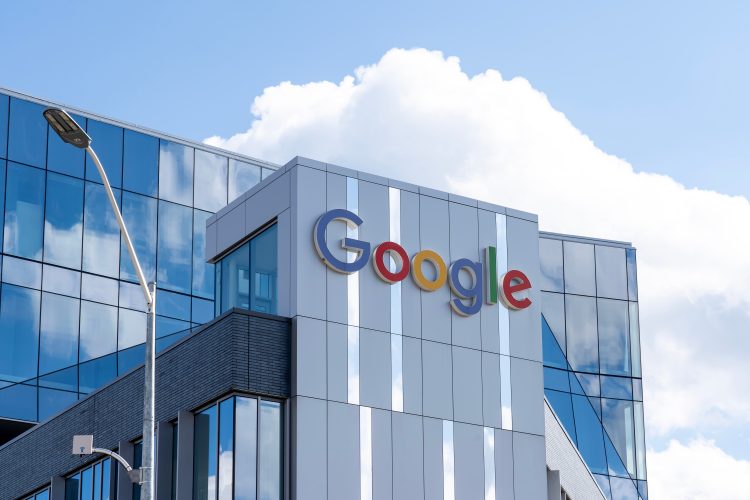
The digital age has brought immense opportunities, but it has also created challenges, especially regarding the safety of vulnerable users. For children, exposure to inappropriate content or harmful online interactions has become a growing concern. Google’s new AI-driven age verification tool addresses this issue head-on by ensuring that users receive age-appropriate online experiences.
However, the implications of this technology extend beyond child safety. In finance, reliable age verification has become a cornerstone for regulatory compliance and fraud prevention. This article examines how Google’s tool works, its benefits, challenges, and its transformative potential for the financial industry.
Understanding Google’s AI-Powered Age Detection
Google’s AI-based age verification system leverages advanced machine learning algorithms to estimate user ages. The tool analyzes non-intrusive data, such as browsing behavior, account history, and other digital footprints. If discrepancies are detected—for example, if an underage user attempts to access restricted content—the system prompts age verification using various methods:
- Selfie-Based Verification: Users upload a selfie, which is analyzed to estimate their age.
- Government ID Uploads: Users can provide official identification for verification.
- Credit Card Validation: In some cases, financial verification methods like credit cards are used.
This robust system minimizes the risk of underage users bypassing restrictions. Moreover, it ensures compliance with global regulations such as the Children’s Online Privacy Protection Act (COPPA) in the United States and similar frameworks worldwide.
Applications Beyond Child Safety
1. Enhancing Financial Services Security
In the finance industry, age verification is critical for offering services such as credit cards, loans, and investment accounts. Traditional KYC (Know Your Customer) protocols rely heavily on user-provided information, which can be falsified. AI-driven age verification adds an extra layer of security by accurately determining eligibility for financial products.
For instance:
- Credit Card Applications: Ensuring applicants meet the minimum age requirement.
- Investment Platforms: Restricting access to high-risk financial instruments for minors.
- Online Payments: Preventing underage users from making unauthorized transactions.
By integrating Google’s AI-powered tool, financial institutions can streamline verification processes, reducing fraudulent activities and enhancing user trust.
2. Compliance with Regulatory Requirements
Governments and financial regulators mandate strict compliance with age-related laws. Non-compliance can result in hefty fines and reputational damage. AI-driven age verification helps financial organizations meet these requirements efficiently, ensuring only eligible individuals access age-restricted products or services.
The Business Case for AI in Finance
Cost Efficiency
Manual age verification processes are resource-intensive and prone to errors. AI systems automate this task, reducing operational costs while improving accuracy. For financial institutions, this translates into significant savings and a faster onboarding process for new customers.
Fraud Prevention
Underage users attempting to exploit financial systems pose a risk to businesses. AI-driven tools can detect and prevent such activities, safeguarding both institutions and their customers.
Building Customer Trust
Modern consumers expect secure, seamless interactions with financial platforms. By employing cutting-edge AI technology, businesses can demonstrate their commitment to user safety, fostering long-term loyalty.
Challenges and Ethical Considerations
While the benefits of AI-powered age verification are clear, challenges remain:
Privacy Concerns
The use of personal data for age estimation raises questions about privacy. Google has assured users that its tool operates within strict privacy guidelines, with no personal data stored during the process. However, financial institutions adopting similar tools must prioritize transparency, ensuring users understand how their data is used and protected.
Accuracy and Bias
AI systems are not infallible. Inaccurate age estimations can lead to service denial or unnecessary verification steps. Developers must continuously improve these tools to minimize errors and avoid biases that could disproportionately impact certain groups.
Regulatory Alignment
AI-powered age verification must align with diverse legal frameworks globally. Financial institutions operating across borders face the challenge of ensuring compliance in multiple jurisdictions.
Global Trends in AI Age Verification
Governments and businesses worldwide are recognizing the potential of AI in age verification. For example:
- Australia: Exploring AI solutions for enforcing age restrictions on social media and other platforms.
- United Kingdom: Considering AI-driven tools to regulate online gambling and age-restricted sales.
- United States: Strengthening COPPA enforcement with advanced technologies.
In the finance sector, these tools are becoming integral to enhancing compliance and security. As digital banking expands, the demand for robust verification systems will only grow.
Opportunities for the Financial Industry
Digital Transformation
AI-powered tools are a natural fit for the ongoing digital transformation in finance. By adopting these systems, institutions can offer faster, safer services while maintaining compliance.
Expanding Financial Inclusion
Age verification can also play a role in financial inclusion. By ensuring that young users access appropriate financial education tools and services, institutions can nurture responsible financial habits from an early age.
AI-Driven Insights
Beyond verification, AI systems can provide valuable insights into user behavior, helping businesses tailor their offerings and improve customer experiences.
Case Studies: AI in Action
1. Google’s Family Link
Google’s Family Link app allows parents to monitor and manage their children’s online activities. The app’s AI features include setting screen time limits, filtering inappropriate content, and monitoring app usage. These tools exemplify how AI can create safer digital environments.
2. Financial Institutions Leading the Way
Banks and fintech companies like Revolut and Monzo are integrating AI-driven KYC tools, including age verification, to enhance security and streamline customer onboarding.
Read: DeepSeek vs. NVIDIA
Google’s AI-powered age verification tool is a game-changer for child safety and digital security. Its applications in the finance sector highlight the transformative potential of AI, offering enhanced compliance, fraud prevention, and customer trust.
As the digital landscape evolves, businesses must embrace innovative solutions to meet user expectations and regulatory demands. By adopting AI-driven age verification tools, the finance industry can ensure secure, inclusive, and responsible growth.
FAQs
What is Google’s AI age detection tool?
Google’s AI age detection tool uses advanced machine learning algorithms to estimate users’ ages and ensure compliance with age-specific content and service restrictions. It provides a non-intrusive, accurate method of verifying age based on browsing behavior, account history, and digital interactions.
How does AI-powered age verification benefit the finance sector?
AI-powered age verification enhances security in financial services by preventing underage access to age-restricted products, such as loans, credit cards, or high-risk investments. It also ensures compliance with legal regulations, reduces fraud, and builds customer trust through improved verification accuracy.
How does Google ensure user privacy in its AI age detection tool?
Google’s AI age detection tool adheres to strict privacy guidelines. It processes data without storing personal information, ensuring users’ privacy is protected while delivering accurate age estimates.
What are the key challenges of AI-driven age verification?
Key challenges include maintaining high accuracy to avoid false positives, addressing potential biases in AI algorithms, and ensuring alignment with varying legal and regulatory requirements across different regions.
Can AI age verification tools reduce financial fraud?
Yes, AI age verification tools help reduce fraud by accurately identifying underage or unauthorized users attempting to access restricted financial services. They provide an additional layer of security to traditional KYC processes.
What industries can benefit from AI-powered age verification tools?
AI-powered age verification tools are valuable for industries such as finance, online gaming, e-commerce, digital content platforms, and social media, where age-restricted services or content must be regulated.
How does AI age verification contribute to financial inclusion?
By verifying ages accurately, financial institutions can provide young users with access to appropriate financial tools, such as savings accounts or educational finance resources, fostering responsible financial habits from an early age.
Is AI age verification compliant with global regulations?
Yes, AI age verification tools like Google’s are designed to comply with global regulatory frameworks, including COPPA in the United States and GDPR in Europe. However, businesses must ensure that their specific implementation aligns with local laws.
What makes AI age verification superior to traditional methods?
AI age verification is faster, more accurate, and less prone to manipulation compared to traditional methods, such as manual ID checks. It also reduces operational costs and enhances the customer experience.
How does age verification impact digital transformation in finance?
Age verification supports digital transformation by automating compliance and security processes. It enables financial institutions to onboard customers quickly, meet regulatory standards, and build trust in digital transactions.





